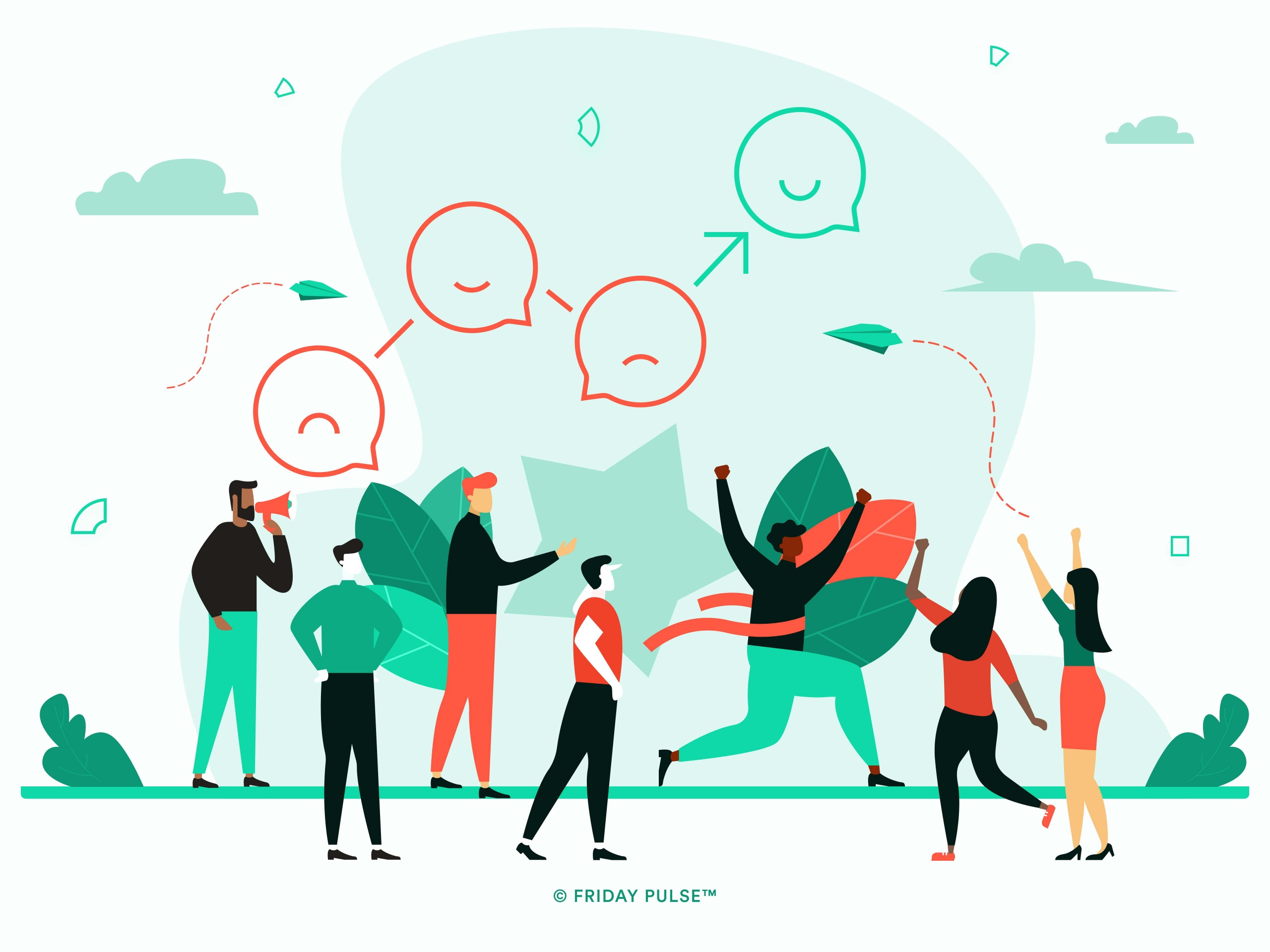At Friday Pulse, we’ve spent years helping organizations measure, understand, and improve happiness at work. What we’ve seen again and again is this: people in happy teams don’t just perform better – they stay longer, collaborate more effectively, and drive sustainable success.
But happiness isn’t a fluffy add-on or an afterthought. It’s shaped by how an organization leads, listens, and designs work. These eight organizational strategies distil the key lessons from our research and experience – showing what it really takes to build happier, more successful workplaces.
1. Lead with vision
Set a clear intention for a positive, productive culture where everyone can be happy and successful.
A shared vision of happiness at work starts at the top. When leaders articulate that wellbeing and success go hand in hand, it sets a tone for how people treat one another, how decisions are made, and what the organization values.
2. Empower your teams
Happiness and success lives in teams – give team leaders time, tools, and trust to build collaboration and flow.
Teams are where people experience work every day. Equip team leaders with the resources and space to nurture connection, solve challenges, and sustain momentum. Strong teams don’t just perform better – they make leadership easier and organizations more resilient.
3. Promote people skills
Select and develop leaders for empathy, fairness, and listening – creating parallel pathways for people and technical excellence.
The best leaders combine competence with compassion. Recognizing and rewarding people skills signals that relational leadership matters – and that psychological safety, fairness, and trust are business priorities.
4. Live the Five Ways
Embed Connect, Be Fair, Empower, Challenge, and Inspire into everyday values, meetings, and decisions.
These Five Ways to Happiness at Work are the building blocks of positive team culture. Embedding them into how your organization operates – from performance reviews to daily conversations – keeps happiness visible and actionable, not abstract or optional.
5. Make time to reflect
Create and protect time-budgets for teams to measure – meet – repeat; celebrating wins and solving frustrations together.
Progress depends on rhythm. Weekly or monthly pulse check-ins give teams space to reflect, share feedback, and recognise what’s working. When reflection becomes part of the routine, teams adapt faster, collaborate better, and stay connected to purpose and progress.
6. Lead with kindness
Build a culture of appreciation and psychological safety – with zero tolerance for bullying, belittlement, or unkindness.
Kindness isn’t soft. It’s the foundation of trust. When appreciation and respect are woven into daily interactions, people feel safe to share ideas, own mistakes, and contribute fully. Kind leadership sets the tone for the whole organization.
7. Balance effort and recovery
Design work for sustainable energy – realistic workloads, fair flexibility, and respect for people’s lives outside of work.
High performance isn’t about working harder, it’s about working sustainably. Supporting healthy balance prevents burnout, boosts creativity, and ensures people bring their best energy to work – not just their longest hours.
8. Measure what matters
Track team happiness alongside performance. Use data to learn and adapt – not judge – because happiness is a leading indicator of success.
Real change starts with measurement. Happiness metrics reveal how people are really experiencing work, helping leaders spot early warning signs and celebrate strengths. By pairing these insights with action, organizations can build a lasting cycle of improvement and growth.
Happiness is a serious business
These eight strategies aren’t one-off initiatives – they’re principles for how to lead, design, and sustain work in a way that values people as much as performance.
When organizations commit to happiness as a strategic goal, they don’t just create better workplaces – they unlock the conditions for lasting success.



